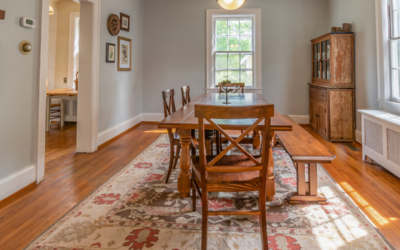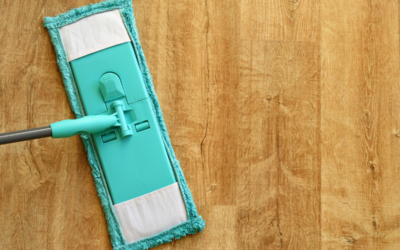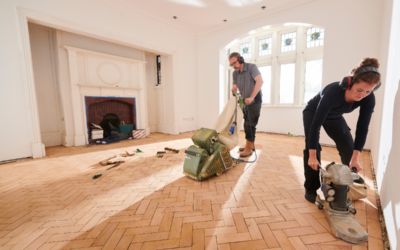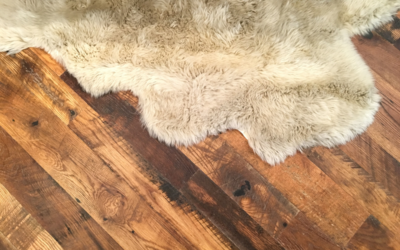You Can’t Rip Out the Carpet Before You Buy, But You Can Make a More Informed Decision By Following These Tips
When you’re shopping for a home, you’ll bear witness to many interesting decorating decisions that past homeowners have made. One of the most frustrating is hardwood flooring covered by plush or shag carpeting.
People love wood flooring, and for good reason. These floors are:
- Easier to clean and disinfect than carpet, which traps dust, dirt, debris, and allergens.
- Match most interior decorating styles.
- Are simple to care for, using basic cleaning products, not vacuums that cost hundreds of dollars.
If you come across a carpeted home during your real estate search, here are a few telltale signs treasured hardwood floors may be hiding – and you could save a bundle on remodeling simply by removing the carpet and refinishing the wood.
Read the Disclosure
The fastest and easiest way to determine whether there’s a hardwood floor hiding beneath carpeting is to read the disclosure from the sellers. By law, this disclosure is available to homebuyers considering a property.
Although it isn’t required that sellers reveal the presence of wood flooring, some will include it in this disclosure. Doing so is a smart idea, because hardwood flooring appeals to so many buyers.
Consider the Age Of the Home
Homes built in more recent decades likely don’t have hardwood flooring, unless they were custom built or high-end tract homes.
However, a home built in the mid-1950s and earlier likely has hardwood floors. In fact, from the late 1800s to the mid-50s, hardwood floors were widely used in American homes. Most commonly, builders used oak, maple, and fir because they’re beautiful and strong.
Keep in mind, however, that just because a house had hardwood flooring when it was built doesn’t mean that those floors still exist. Unfortunately, some past homeowners removed the floors altogether when carpet and linoleum increased in popularity. So although it’s not a foolproof method of knowing whether there’s wood hiding beneath carpet, understanding when the home was built can give you a good idea of what you might find.
Check the Closets For Signs Of Hardwood Floors
If carpeting was installed over hardwood floors, there could be reveals throughout the home that can show you what to expect when you pull up carpet.
Check all the closets; in some cases, homeowners don’t extend the carpet into them, and instead opted for a transition strip at the closet door.
You also may be able to peel up a tiny corner of the carpet in a closet to take a peek beneath it. However, this could cause damage to the home. Ask your real estate agent whether you can safely check beneath the carpet in an inconspicuous area before doing so.
Examine the Floor Vents
If the home you’re considering has floor vents, you can easily lift them out to see what’s underneath. The carpet may not be tacked down in this section, so you can look into the vent opening to see if there’s a layer of hardwood floor. Just be sure you aren’t seeing the subfloor and assuming it’s wood flooring.
Check In the Basement
If the home has an unfinished basement, arm yourself with a flashlight and shine it around plumbing or ductwork. You may be able to spy sections of hardwood floor through the subfloor planks.
Can’t Tell If the Home’s Floor Is Hardwood or Something Else?
Finding hardwood under carpet feels like a major victory, but what if you’re considering a home that has already been fully remodeled? How can you tell a true wood floor from engineered wood or vinyl plank?
- Knock or tap on the floor. Solid hardwoods are very dense, so they have a distinct sound.
- Read the disclosure. It should list the types of flooring found in the home.
- Get up close and personal. It’s easy to tell real wood grain from printed-on or formed vinyl if you look carefully.
- Check for certain features. If you see grout between the planks, the flooring is likely ceramic tile. If the floor is totally seamless, you might be looking at linoleum or sheet vinyl.
- Ask your home inspector to confirm. Although they may not be able to tell the difference between hardwood and engineered wood, they can likely indicate whether the flooring is not made of wood at all, such as “luxury” vinyl plank.
Can’t Find a Home With Hardwood Flooring?
If, in your search for a home that has wood floors, you’re unable to find one that meets your needs, you don’t have to compromise much. Having new wood flooring installed, particularly in your kitchen, living room, hallways, and other communal areas, doesn’t have to be unaffordable.
Many local hardwood flooring companies offer financing or beat competitor’s rates, so you can get the home of your dreams, wood floor and all.









